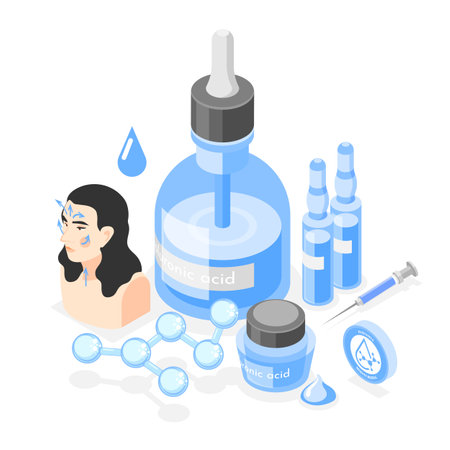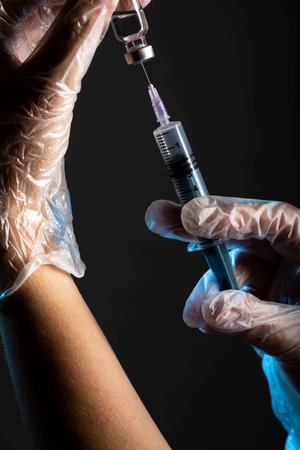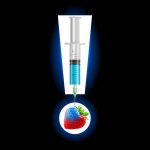1. Understanding Hyperpigmentation and Its Causes
Hyperpigmentation is a common skin condition that causes certain areas of the skin to appear darker than the surrounding skin. This occurs when excess melanin—the pigment responsible for skin color—is produced in specific spots. While hyperpigmentation is generally harmless, it can be frustrating for those who want an even skin tone.
Common Causes of Hyperpigmentation
Several factors contribute to hyperpigmentation, ranging from environmental influences to internal changes in the body. Understanding these causes can help determine the best approach for treatment.
Sun Exposure
One of the most common causes of hyperpigmentation is prolonged exposure to the sun. UV rays trigger melanin production as a natural defense mechanism, but excessive exposure can lead to sunspots or uneven pigmentation over time.
Hormonal Changes
Fluctuations in hormones, especially during pregnancy or due to conditions like melasma, can cause dark patches on the skin. Women taking birth control pills or undergoing hormone therapy may also experience pigmentation changes.
Post-Inflammatory Hyperpigmentation (PIH)
This type of hyperpigmentation occurs after skin inflammation or injury, such as acne, eczema, or cuts. When the skin heals, it may leave behind dark spots or discoloration.
A Quick Overview of Hyperpigmentation Causes
| Cause | Description |
|---|---|
| Sun Exposure | UV rays increase melanin production, leading to sunspots and uneven pigmentation. |
| Hormonal Changes | Pigment changes due to pregnancy, birth control, or hormone therapy. |
| Post-Inflammatory Hyperpigmentation (PIH) | Pigmentation left behind after acne, eczema, or other skin injuries heal. |
2. How Laser Skin Resurfacing Works
Laser skin resurfacing is a popular treatment for hyperpigmentation, helping to improve uneven skin tone by targeting excess melanin in the skin. But how does it actually work? Lets break it down.
The Science Behind Laser Skin Resurfacing
Laser skin resurfacing works by using focused light energy to penetrate the skin and break down pigmentation. The laser energy is absorbed by the darker pigmented areas, which helps to disperse excess melanin and encourage new, even-toned skin cell growth.
How Lasers Target Pigmentation Issues
When treating hyperpigmentation, lasers work in two primary ways:
- Ablative Lasers: These remove the outer layer of the skin (epidermis) while heating the underlying layers to stimulate collagen production. This helps reveal fresh, evenly toned skin.
- Non-Ablative Lasers: These penetrate deeper into the skin without damaging the surface. They target melanin clusters and promote natural healing over time.
Types of Lasers Used for Hyperpigmentation Treatment
Different types of lasers are used depending on the severity of pigmentation and skin type. Below is a comparison of common laser treatments:
| Laser Type | Treatment Method | Best For | Downtime |
|---|---|---|---|
| CO2 Laser | Ablative – removes outer skin layers | Deep pigmentation, acne scars | A few weeks |
| Erbium Laser | Ablative – less aggressive than CO2 | Mild to moderate pigmentation, fine lines | A few days to a week |
| Pico Laser | Non-ablative – breaks down pigment at rapid speed | Darker skin tones, post-inflammatory hyperpigmentation (PIH) | No significant downtime |
| Fraxel Laser | Ablative & non-ablative options – stimulates collagen while targeting pigmentation | Mild to moderate sunspots, melasma, fine lines | A few days to a week |
| Nd:YAG Laser | Non-ablative – penetrates deep into the skin without harming surface layers | Darker skin tones, stubborn pigmentation | No significant downtime |
Selecting the Right Laser for Your Skin Type
Your skin type and level of hyperpigmentation will determine which laser treatment is best for you. Consulting with a board-certified dermatologist or laser specialist can help you find the most effective option with minimal risk of side effects.
The Importance of Multiple Sessions
No single laser session will completely eliminate hyperpigmentation. Most treatments require multiple sessions spaced several weeks apart to achieve optimal results. Your provider will recommend a customized treatment plan based on your unique needs.
If youre considering laser skin resurfacing for hyperpigmentation, understanding how different lasers work can help you make an informed decision about your skincare journey.

3. Benefits of Laser Skin Resurfacing for Hyperpigmentation
Laser skin resurfacing is a popular treatment for those looking to even out their skin tone and reduce hyperpigmentation. This advanced procedure offers multiple benefits, making it an effective option for individuals struggling with dark spots, uneven pigmentation, and overall skin texture concerns.
Evens Out Skin Tone
One of the primary benefits of laser skin resurfacing is its ability to target excess melanin in the skin, which causes dark spots and discoloration. By breaking down these pigmented areas, laser treatments help create a more balanced and even complexion.
Reduces Dark Spots and Sun Damage
Hyperpigmentation caused by sun exposure, acne scars, or aging can be significantly reduced with laser therapy. The treatment encourages the skin to shed damaged cells and generate new, healthy ones, leading to a brighter and more youthful appearance.
Improves Skin Texture
Beyond addressing pigmentation issues, laser resurfacing also enhances overall skin texture. It stimulates collagen production, helping to smooth fine lines, reduce pore size, and improve skin elasticity.
Customizable Treatment Options
Different types of laser treatments are available depending on your skin type and concerns. Below is a comparison of common laser options:
| Laser Type | Best For | Downtime |
|---|---|---|
| Ablative Lasers (CO2, Erbium) | Severe hyperpigmentation, deep wrinkles | 1-2 weeks |
| Non-Ablative Lasers (Fraxel, Nd:YAG) | Mild to moderate pigmentation issues | Minimal |
| Pulsed-Dye Laser (PDL) | Redness, rosacea-related pigmentation | No downtime |
Long-Lasting Results
The results of laser skin resurfacing can be long-lasting when combined with proper skincare and sun protection. Regular sunscreen use and a tailored skincare routine help maintain the improvements achieved through treatment.
4. What to Expect During and After Treatment
The Procedure: What Happens During Laser Skin Resurfacing?
Laser skin resurfacing is a non-invasive treatment that targets hyperpigmentation by removing the outer layers of damaged skin. The procedure typically begins with cleansing the treatment area, followed by applying a numbing cream to minimize discomfort. Once the skin is prepped, a specialized laser is used to deliver controlled pulses of light energy, breaking down pigmentation and stimulating collagen production.
Does Laser Skin Resurfacing Hurt?
Most patients describe the sensation as a mild stinging or warmth on the skin. If youre worried about discomfort, your provider may offer a cooling device or topical anesthetic to ease any irritation. The intensity of the sensation depends on the type of laser used and your individual pain tolerance.
Healing Time: How Long Does Recovery Take?
The healing process varies depending on the depth and intensity of the laser treatment. Below is a general recovery timeline:
| Time After Treatment | What to Expect |
|---|---|
| 0-24 Hours | Mild redness, slight swelling, and warmth similar to a sunburn. |
| 2-5 Days | The skin may start to peel or flake as it regenerates. |
| 1-2 Weeks | The treated area continues to heal, revealing smoother, more even-toned skin. |
| 4+ Weeks | Full results become visible; continued improvement over time. |
Aftercare Tips for Best Results
- Avoid Sun Exposure: Protect your skin with SPF 30+ sunscreen and wear protective clothing.
- Keepskin Hydrated: Use gentle moisturizers to prevent excessive dryness or irritation.
- No Picking or Scratching: Let your skin heal naturally without peeling off flakes.
- Avoid Harsh Skincare Products: Skip exfoliants and retinoids until fully healed.
- Follow Your Provider’s Instructions: Adhere to post-treatment guidelines for optimal results.
5. Is Laser Skin Resurfacing Right for You?
Before deciding on laser skin resurfacing for hyperpigmentation, it’s important to understand whether this treatment is the right fit for you. Factors such as your skin type, the severity of pigmentation, and potential risks all play a role in determining if this procedure will deliver the results youre looking for.
Skin Type Considerations
Not all skin types respond to laser treatments in the same way. While some individuals see significant improvements, others may experience complications like post-inflammatory hyperpigmentation (PIH) or prolonged redness. Here’s a general guideline based on the Fitzpatrick skin type scale:
| Fitzpatrick Skin Type | Laser Suitability | Potential Risks |
|---|---|---|
| Type I & II (Fair Skin) | Highly responsive to laser treatment | Minimal risk of hyperpigmentation |
| Type III & IV (Medium to Olive Skin) | Moderate responsiveness | Possible risk of PIH, requires careful laser selection |
| Type V & VI (Dark Skin) | Higher risk of pigmentation changes | Increased chance of PIH; specialized lasers recommended |
Severity of Hyperpigmentation
The effectiveness of laser skin resurfacing also depends on how deep and widespread your pigmentation issues are. Mild to moderate cases often respond well to fractional lasers, while deeper pigmentation might require more aggressive treatments like CO2 or erbium lasers.
Mild Pigmentation
If you have light sunspots or minor discoloration, non-ablative lasers like Fraxel or IPL (Intense Pulsed Light) may be effective with minimal downtime.
Moderate Pigmentation
For melasma or more noticeable dark spots, fractional CO2 lasers may offer better results while still allowing controlled healing.
Severe Pigmentation
If your hyperpigmentation is deep-rooted or resistant to other treatments, ablative lasers such as full-field CO2 or erbium lasers could be necessary, though they come with longer recovery times.
Potential Risks and Side Effects
While laser resurfacing can significantly improve skin tone, there are risks involved. Common side effects include redness, swelling, and temporary darkening before improvement occurs. More serious risks include scarring, infection, or worsening pigmentation in darker skin tones if not performed by an experienced provider.
How to Minimize Risks
- Consult with a board-certified dermatologist or laser specialist.
- Follow pre-treatment and post-care instructions carefully.
- Avoid sun exposure before and after treatment to prevent complications.
- If you have darker skin, ask about lasers designed specifically for higher Fitzpatrick types.
Who Should Avoid Laser Resurfacing?
Certain individuals should reconsider laser treatments due to medical history or lifestyle factors. If you fall into any of these categories, consult with a professional before proceeding:
- Pregnant Women: Hormonal changes can affect pigmentation results.
- Keloid-Prone Individuals: Those who develop raised scars easily may have an increased risk of adverse reactions.
- Recent Tanning or Sun Exposure: Freshly tanned skin has a higher likelihood of burns and discoloration.
- Certain Medical Conditions: Autoimmune diseases or active infections may interfere with healing.
- History of Cold Sores: Laser treatments can trigger outbreaks; antiviral medication may be needed beforehand.
If youre unsure whether laser skin resurfacing is right for you, scheduling a consultation with an experienced skincare professional is the best way to assess your options and minimize potential risks.


